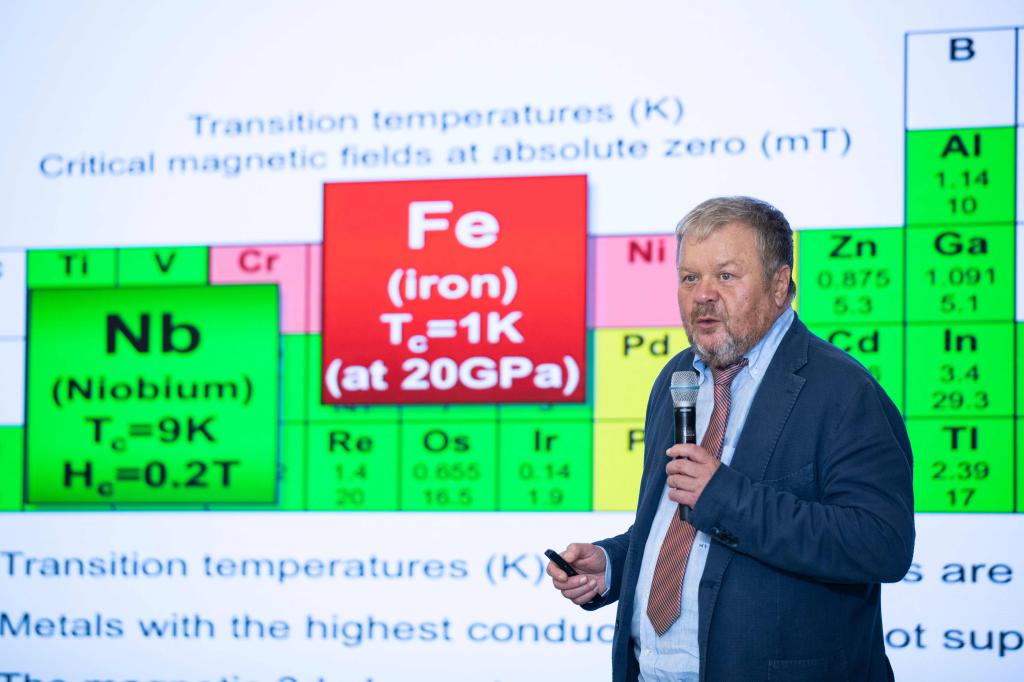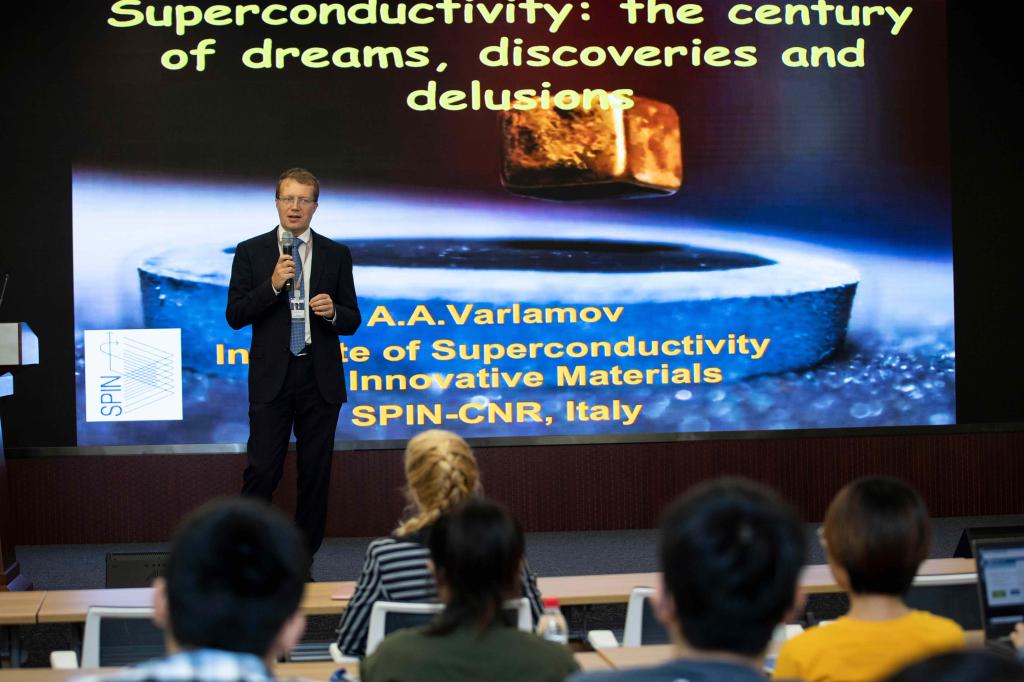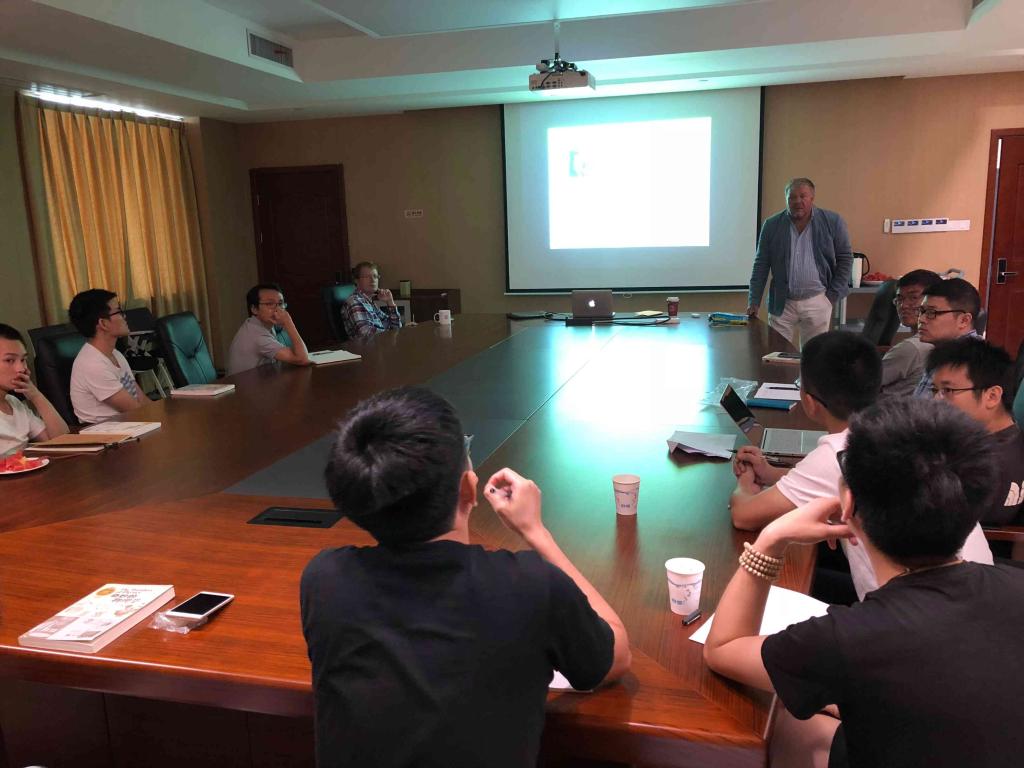Superconductivity: a century of discoveries, dreams and delusions
A. A. Varlamov
Institute of Superconductivity and Innovative Materials,
Italian National research Council

Andrey Varlamov was born in Ukraine. He worked as a researcher, associate professor, and full professor of the Department of Theoretical Physics of the Moscow Institute for Steel and Alloys, then as the fellow at the Condensed Matter Theory Group of Argonne National Laboratory (USA). Since 1999 he has been the principal investigator of the Institute of Superconductivity, Innovative Materials, and Devices of the Italian National Research Council.He is a member-correspondent of Istituto Lombardo Accademia di Scienze e Lettere. His main fields of scientific interests are: superconductivity, theory of metals, theory of phase transitions, and nanophysics. He is a member of the Editorial Board of the Russian Academy of Sciences popular science magazine “Kvant”.
A. Varlamov是超导理论和凝聚态物理学领域的著名科学家。1954年出生于苏联基辅;1980年在阿历克斯·阿布里科索夫指导下获凝聚态物理学博士学位,1986年获苏联国家青年科学家物理学奖,1990~1999任莫斯科钢铁与合金研究所理论物理系教授;1999年起任意大利国家研究委员会超导、新材料和器件研究所研究主任,罗马大学教授;2009年起任意大利科学院通讯院士;有8本超导理论方面的专著和130余篇科学论文;1986~1992年任苏联科学院科普杂志《量子》副主编;已有50余篇科普作品发表于《量子》等著名科普刊物,主要由这些科普作品结集成书的《奇妙的物理学》出版于1987年,在其后25年内以6种语言出版了12版。A. Varlamov也是俄罗斯科学院社科杂志“KvANT”编委会成员和副主编。

Abstract
The lecture is devoted to discussion of one of the most bright and unusual discoveries of XX century Physics: superconductivity. First we discuss the story of discovery of this phenomenon, hopes and delusions followed it, speak about a long half-century of the search for new superconductors and accumulation of the experimental facts. Then we pass to the remarkable phenomenological theory of superconductivity created by Russian physicists Vitaly Ginzburg and Lev Landau. In those times when this theory was developed, the microscopic origin of this quantum phenomenon still could not be recognized, but even being phenomenological in its nature the Ginzburg-Landau theory allowed to systemize and predict a lot of superconductor’s properties. Basing on it A.A.Abrikosov discovered soon the fundamentally new class of superconductors: superconductors of the second type. At the end of this part of lecture I will present the basic ideas of the microscopic theory of superconductivity, created in 1957 by three American scientists J.Bardeen, L. Cooper and R.Schriffer.
This, first period of studies of superconductivity was superseded by the second one: the period of the chase for high critical temperatures and magnetic fields, proposals of the theoretical concepts for alternative to the BCS mechanisms of superconductivity and development first practical applications. At the same time English physicist Brian Josephson predicted the phenomenon of a weak superconductivity, which opened the new fields of applicability of superconductivity.
The third period in development of superconductivity started in 1986 with the discovery by Swiss scientists Alex Muller and George Bednortz of the new class of oxide superconductors which critical temperatures in short time overcame crucial for practical applications the “nitrogen limit” - 77 К. The author tells about this last, fascinating, period being its immediate participant.
Fluctuation Spectroscopy: from Rayleigh-Jeans Waves to Abrikosov Vortex Clusters

Abstract
Superconducting (SC) fluctuations, discovered in the late 1960s, have constituted an important research area in superconductivity as they are manifest in a variety of phenomena. Indeed, theunderlying physics of SC fluctuations makes it possible to elucidate the fundamental properties of the superconducting state. The interest in SC fluctuation phenomena was further enhanced with the discovery of cuprate high-temperature superconductors (HTSs). In these materials, superconducting fluctuations appear over a wide range of temperatures due to the superconductors extremely short coherence lengths and low effective dimensionality of the electron systems. These strong fluctuations lead to anomalous properties of the normal state in some HTS materials. Within the framework of the phenomenological Ginzburg-Landau theory, and more extensively in the diagrammatic microscopic approach based on BCS theory, SC fluctuations as well as other quantum contributions (weak localization, etc.) enabled a new way to investigate and characterize disordered electron systems, granular metals, Josephson structures, artificial superlattices, and others. The characteristic feature of SC fluctuations is its strong dependence on temperature and magnetic field in the vicinity of the superconducting phase transition. This dependence allows the separation of fluctuation effects from other contributions and provides information about the microscopic parameters of a material, inparticular, the critical temperature and the zero-temperature critical magnetic field. As such, SCfluctuations are very sensitive to the relaxation processes that break phase coherence and can beused as a versatile characterization instrument for SCs: Fluctuation spectroscopy has emerged as a powerful tool for studying the properties of superconducting systems on a quantitative level. Here the physics of SC fluctuations is reviewed, commencing from a qualitative description ofthermodynamic fluctuations close to the critical temperature and quantum fluctuations at zerotemperature in the vicinity of the second critical field. The analysis of the latter allows us to present fluctuation formation as a fragmentation of the Abrikosov lattice. This review highlights a series of experimental findings followed by microscopic description and numerical analysis of the effects of fluctuations on numerous properties of superconductors in the entire phase diagram and beyond the superconducting phase.